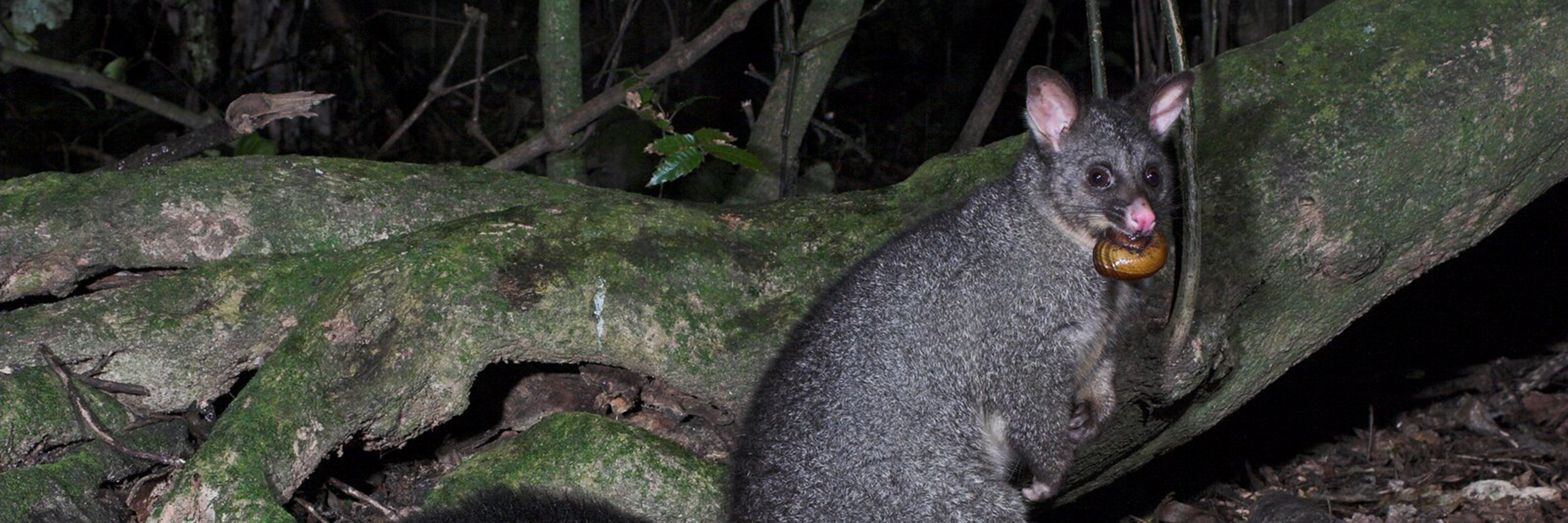Why New Zealand needs predator control
Habitat loss
Since 1840, three quarters of the native vegetation in the Waikato region has been cleared. Just over half of what is left is legally protected. Many natural areas require fencing to keep stock out, and regular pest and weed control. The Waikato Regional Council is working with the community to protect and enhance our remaining natural habitat.
Since 1840, people have drained wetlands and cleared native vegetation in the Waikato region for pasture, horticulture, pine plantation or urban areas.
Today, much of the land suitable for pastoral farming has been cleared. Most of the remaining vegetation covers steep hill country, which is prone to erosion and uneconomic to farm.
Almost half of the remaining areas of native vegetation are not legally protected. Native timber milling is restricted to sustainable harvest under the Forest Amendment Act 1993. However, these unprotected areas may still be at risk of being cleared for pasture or pine plantation.
Drainage in nearby areas can affect wetlands even if the vegetation in the wetland is not cleared.
Check out our indicators on the extent of native vegetation and wetland vegetation in our region.
Change in vegetation type by area since 1840
| Vegetation type | Current area (ha) | Current percent of region | Percent of total native vegetation | Loss since 1840 (ha) | Loss since 1840 (% of original area) |
| Native forest | 488,240 | 20 | 78 | 796,001 | 62 |
| Native scrub | 101,411 | 5 | 16 | 874,901 | 90 |
| Wetland | 30,426 | 1 | 5 | 78,641 | 75 |
| Geothermal | 627 | <1 | <1 | unknown | unknown |
| Coastal dune | 129 | <1 | <1 | 5,790 | 98 |
| Total native vegetation | 620,833 | 26 | 100 | 1,755,333 | 74 |
| Plantation forest | 288,811 | 12 | n/a | n/a | n/a |
| Agriculture/Horticulture | 1,362,264 | 57 | n/a | n/a | n/a |
Sources:
- Native vegetation data from Leathwick, J. Clarkson, B. and Whaley, P. 1995: Vegetation of the Waikato Region: Current and Historic Perspectives, Landcare Research, Hamilton.
- Plantation forest data from Terralink New Zealand (Landcover Database, 1996).
- Agriculture/horticulture (including cropping) data from AgriQuality New Zealand (Agribase, 1998).
Pest animals and plants
Introduced pests have become established in all of our mainland forests and wetlands and threaten many of our native plants and animals. Almost all of the region’s native forests are at risk from possum damage. Rats, feral goats, rabbits, deer, wild pigs, hedgehogs, and domestic pets or stock can also cause significant damage.
Often a range of animal and plant pests is found in the same area, with their combined effects causing a lot of damage:
- Plant pests, such as wild ginger and old man’s beard, strangle trees or smother seedlings.
- Animal pests such as rats, possums, feral cats and stoats eat native animals or kill them indirectly by eating their food.
- Some animal pests kill trees by eating leaves and bark, or by compacting soils with their hooves.
- Animal pests also interfere with plant breeding by killing the animals that pollinate flowers and spread seeds, or by eating and trampling the flowers and seeds themselves.
- In wetlands introduced plants like willow and sweetgrass can choke out the native plants.
Grazing
Unlike most countries, New Zealand’s plants and animals evolved without any large grazing mammals around. Our soils and plants cannot cope with the trampling, grazing and waste from stock. When stock get into natural areas they can cause:
- soil compaction and erosion
- reduced seedling survival
- damage to bark and shrubs
- changes in the microclimate (by creating gaps and opening the understorey)
- excess nutrient deposits.



